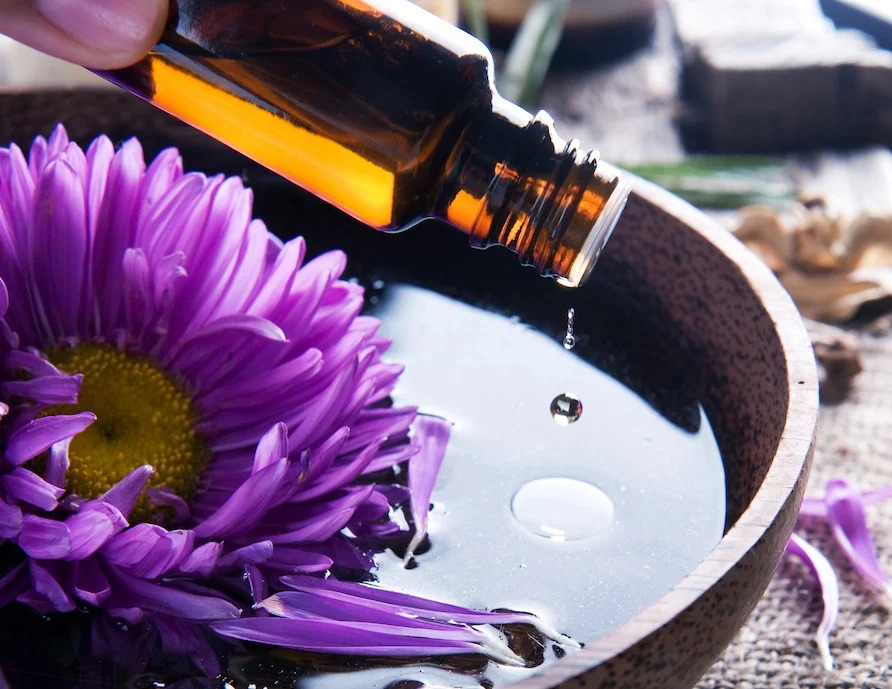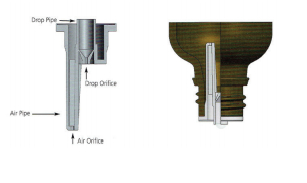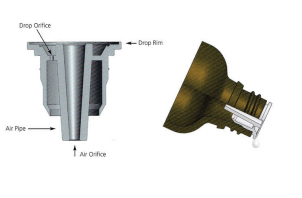
Have you ever purchased a t-shirt, baseball cap, or pair of socks online that came with the sizing “one-size-fits-all”?
Chances are you received this item to realize the truth––that this actually means one-size-fits-most. After all, some people like wearing clothing tight, and others wear it loose-fitting.
There truly cannot be one-size-fits-all.
Size is variable whether you are talking about the human form or flow rate of essential oils. You want the best possible experience for your customer––and your goal is to get your dropper insert to fit just right for each type of oil you package.
Ideal flow rates make customers happy by reducing mess and wasted product. The right dropper means easier, cleaner use for your customer.
But if you’re stuck wondering how to pick the right insert, you first need to know the difference between them and the use cases so you can choose the size that fits your bottles the best:
Understanding the 2 Different Types of Dropper Inserts
A horizontal dropper is a popular option for thinner products, such as low-viscosity essential oils, including lavender, bergamot, and most citrus oils. This dropper type features rim dispensing, and pairs well with tamper-evident (t/e), child-resistant (c/r), and child-resistant/tamper-evident caps. It’s called a horizontal dropper insert simply for the main way it is used: horizontally. Your user tips the bottle approximately 135 degrees, and may have to dip or tap the bottle one time to begin the exchange between air entering and oils exiting the bottle. Air enters the bottle from the air tube that is located in the center of the dropper, and essential oils flow out from the small holes that surround the air tube. The drop is formed by the rim of the dropper insert (giving the alternate name of this dropper insert type, “rim-droppers.”)
A vertical dropper works with the same bottle types as a horizontal dropper insert. However, your user tips the bottle upside down (vertically)––a full 180––to use it. They may also have to dip or tap the bottle one time to begin the exchange between air entering and oils exiting the bottle. Air enters the bottle from the air tube that is located on the side of the dropper. Essential oils flow out and form a drop from the center tube, known as the liquid exit tube.
Uses Cases for Horizontal Droppers
Horizontal droppers are not a one-size-fits-all solution for bottling essential oils––but they are more universal for differing product viscosity.
If you are searching for a dispensing method that may be more intuitive, then horizontal droppers are a suitable option. The drops will begin to flow when the container is in the horizontal position similar to pouring product in other types of containers.
For essential oil manufacturers that package multiple oils in a range of viscosity, the horizontal dropper insert offers the greatest variability. You will need fewer SKUs to accommodate differing product viscosities.
Speaking of capping, since the air tube doesn’t extend past the tamper-evident band, the horizontal dropper insert is much easier to cap and package. You gain from time saved on capping, as well as less product breakage and frustration among your line workers.
For all the good that horizontal droppers offer, there are some disadvantages.
For starters, this type of insert simply isn’t as clean as the vertical dropper inserts. Since users depend on the rim to form the drop of oil, the product can drip and run over the side of the neck and down the bottle. This creates a mess for the consumer, which can lead to dissatisfaction in your product.
Along the same lines, it is nearly impossible to get the product to return to the bottle after each use. The product remains on the face of the insert and is stored unwanted in the cap. This forms more residual on the face and prevents the cap from tightening, which again leads to more mess for the customer. Additionally, horizontal droppers are closer to the “one size fits all” concept that can leave some oils flowing too quickly, while others flow too slowly.
Use Cases for Vertical Droppers
Vertical inserts are ideal for essential oils that require a controlled flow and drop rate, provided you choose the correct orifice, or liquid entrance.
Vertical dropper inserts are best suited for oils that demand a controlled flow rate so customers can get just the right number of drops out of the bottle.
They have a cleaner shut-off compared to horizontal droppers, as the drop can break off inside the dropper insert and flow back down the air tube. Vertical droppers offer a drain-back benefit that allows the excess product to flow back into the bottle when you tip it back.
When using a vertical dropper, your customers will turn the bottle of essential oils upside-down in order to access the product. From here, the flow is more controlled and the drop is better defined. Customers who want a select number of drops of essential oils, i.e., for aromatherapy or candle making, can do so with a vertical dropper insert. This also makes for less mess.
For the disadvantages of using vertical dropper inserts:
Since the air tube extends past the tamper-evident band, you have to orient the asymmetric dropper. Managing the filling, assembly, and capping of the vertical insert can be less efficient.
Also, since the vertical dropper provides greater precision for flow rates, one size definitely will not fit all. Flow rates of individual oils will vary, and you will need to use different inserts for each of your product lines.
To accommodate the differences in viscosity of your essential oils, you may need to have multiple SKUs, which can present manufacturing challenges.
To Sum It Up
How can you choose the best size for your essential oil bottling requirements? Start with a sample of horizontal and vertical dropper inserts for your latest manufacturing project. Carow Packaging will be happy to review the merits of each dropper type for your particular product.
Contact us for more information on dropper inserts to meet your custom packaging needs. We can provide both types of standard dropper inserts, along with additional attributes such as tamper-evident, child-resistant, or a combination of both.
Thanks to more than 30 years of packaging experience, we can help you decide the best fit for your essential oil bottling needs.
